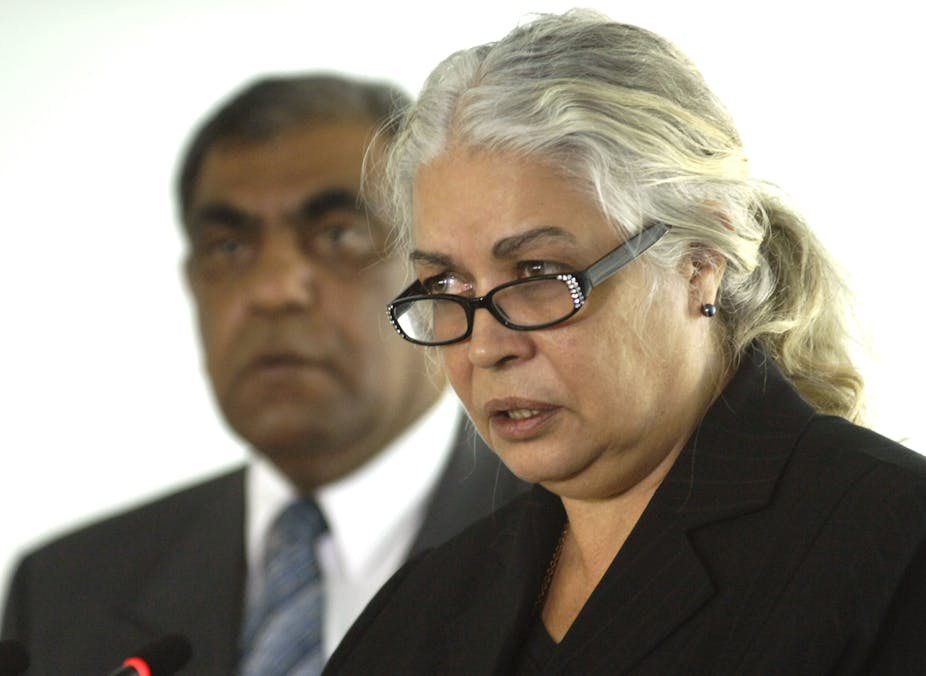The research funding world is not often filled with controversy, but the story of indigenous academic Marcia Langton’s research funding has recently garnered a lot of attention.
Langton, who in her recent Boyer lectures argued that the mining boom helped indigenous communities, has come under criticism for not disclosing on the ABC that part of her Australian Research Council Linkage grant was funded by mining groups like Rio Tinto and Woodside.
Langton and the ABC have denied any wrongdoing. But the case highlights some of the misconceptions about Linkage grants, which can usher corporate money into the research system. After all, in the academic world, private partners funding research projects is nothing new.
But what are Linkage grants and how do they work?
Investing in research
The ARC offers a range of funding schemes, including Linkage, Discovery, and the Discovery Early Career Researcher Award (DECRA).
The process of writing, developing, submitting, and assessing ARC grants is complex and lengthy.
ARC Linkage grants have been around in one form or another for at least 15 years. The idea behind them is to “develop long-term strategic research alliances between higher education organisations and other organisations”.
As well as requesting funding from the ARC, Linkage applications require researchers’ institutions and their partner organisations to invest in the project together.
The collaboration with the partner must be strong and convincing, with the connection giving rise to outcomes that could not be achieved by either organisation alone.
Each Linkage project must have a combined cash contribution from partner organisations of at least 25% of the total funding requested from the ARC.
Judging what constitutes an appropriate level of commitment from the partner organisation is an arcane balance. Only meeting the 25% requirement can make it look as if the project’s partners needed a bit of shepherding to commit; too much cash, however, can signal a project that could be carried out without ARC funding (e.g. it could be a contract research project).
Show me the money
According to the most recent Linkage statistics (Round 2, 2012), partner organisations put in $2.20 for each ARC dollar from the Commonwealth government.
Linkages can be developed in any discipline. Recently funded projects aimed to save the koalas, examine how carbon tax will affect energy demand in rural Australia, and create better public transport communication systems.
As with topics, the range of eligible partner organisations can be very diverse. They may be non-profit organisations, corporations, small businesses, government departments, or city councils. A combination of these could be collaborating with several universities on a single project application.
The competition for Linkages has increased significantly over the last few years. The last completed round of Linkage funded 185 projects out of the 504 applications that were submitted. This constituted a research investment of more than $58.4 million.
In the first round for 2009, success rates were high at almost 50%. The second round for 2012 had a success rate of 36.7%. The amount of funding granted to projects has fallen on average since 2009.
But for national competitive grants, Linkages still offer relatively good odds. Other major ARC schemes do not: Discovery project have success rates of about 20%, and the Discovery Early Career Researcher Award (DECRA) rate sits at about 10%.
Conflict of interest?
All researchers on ARC projects operate under the Australian Code for the Responsible Conduct of Research (2007). The Code has clearly detailed conditions for discerning and addressing situations where conflict of interest may arise.
To assume that Linkage grants present an inherent conflict of interest for academic researchers is misguided. To an extent, it buys into the cliché of university research as something that is set apart from general society and unable to perform when it finds itself in a mundane mix of political, cultural, and social tensions.
A brief browse through recent Linkage outcomes provides many examples of projects attuned to the problems and pressures in our society to which solutions must be found.
Findings from Linkage projects return to the wider community through various ways including: Open Access publications, working papers, or reports; community forums and public lectures; and online resources and data-sets. These can all help to shape policy or bring about new innovations, but of course, intellectual property issues may limit this.
The complicated, extended process that accompanies ARC competitive grant rounds means that partner organisations cannot get fast results or instant outcomes.
Their involvement has to exist at a deeper, patient level that commits to the project’s scope, and the researchers’ professional investigation.
Linkages must navigate intellectual, logistical, and legal processes before coming into being. Researchers who win them never profit personally from them, beyond the oblique prestige of having gained a competitive grant through their university.
Whatever else might be said about the Langton case, it should not be assumed that funding from mining groups automatically means a conflict of interest.

